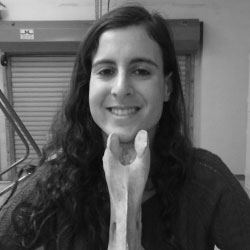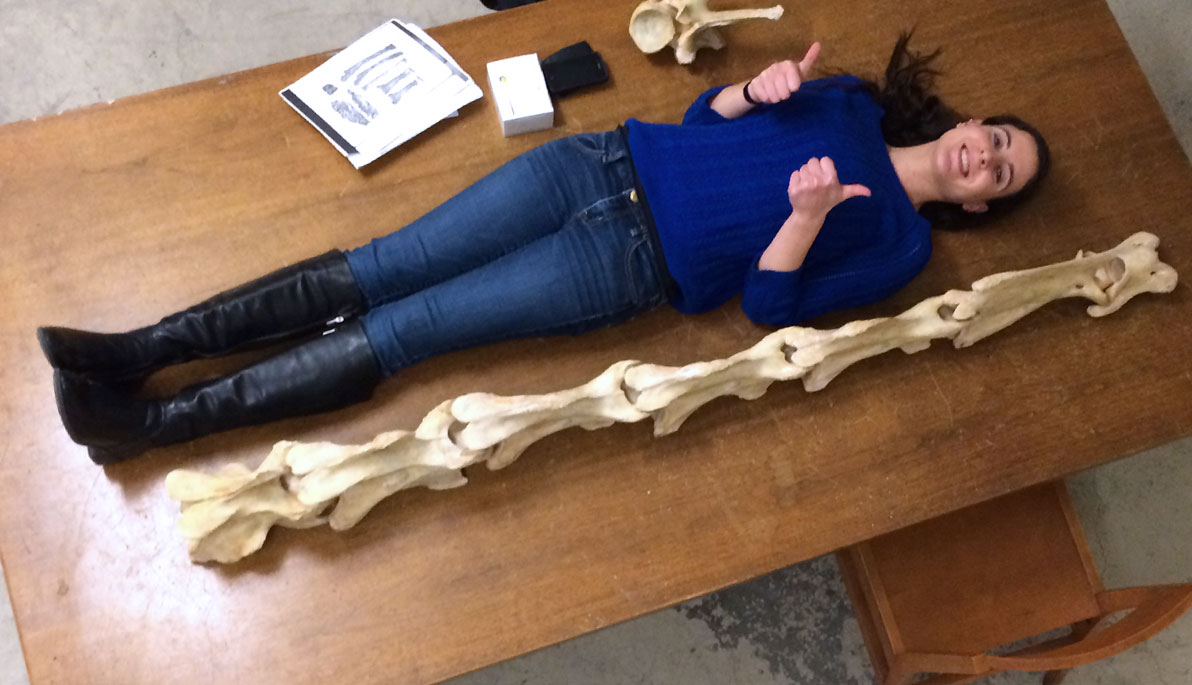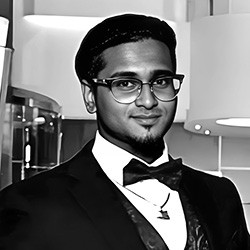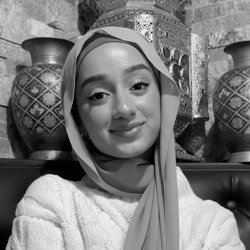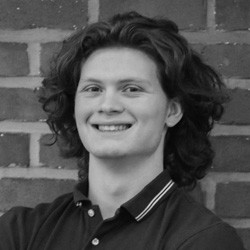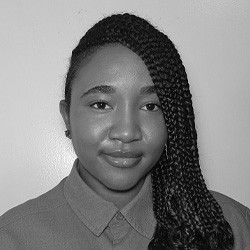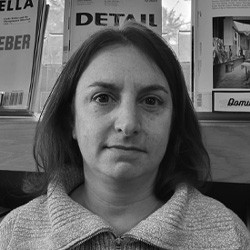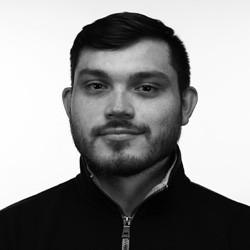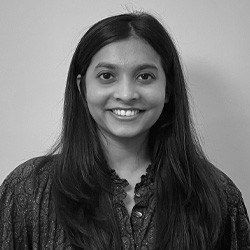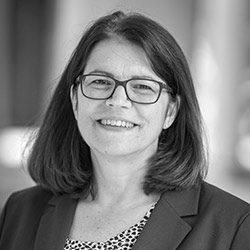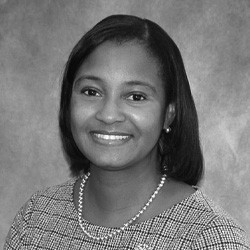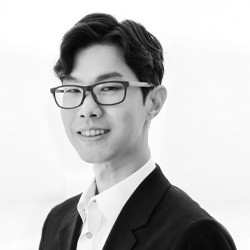Photo: Melinda Danowitz lying next to the cervical vertebrae of a giraffe at the Museum of Natural History in New York City.
Who knew that studying fossils might help one better treat the human body? That is exactly what Melinda Danowitz is doing as she works toward her goal of becoming a pediatrician.
The medical student and Class of 2017 graduate nurtured a love of paleontology after studying the morphology of fossils working alongside Matthew Mihlbachler, Ph.D., and Nikos Solounias, Ph.D., at NYIT College of Osteopathic Medicine (NYITCOM). In her five years as an NYIT student, Danowitz has been a key player in several research projects at the university, and has published 15 peer-reviewed articles with NYIT faculty and students on topics ranging from the elongation of giraffe necks to the embryology and evolutionary history of the respiratory tract.
“One thing I’ve learned through research and the scientific publication process is how small I am in the research world but how big my work can become,” she says. “One of our studies may be cited by another study 20 years from now. It’s the coolest thing because we’re helping researchers of the future.”
Her investigation into the evolution of giraffe necks with Solounias garnered wide acclaim with featured coverage in National Geographic, the Washington Post, Live Science, and other top media sources. The pair has also published detailed anatomical descriptions of cervical vertebrae, limbs, heel bones, and other skeletal parts of living and extinct giraffids (mammals that share a common ancestor with deer or bovids).
With Mihlbachler and Solounias, Danowitz investigated a new method of evaluating tooth wear in ruminants, helping to develop a new method of deducing their diets by evaluating dental morphology. In addition, she helped launch a new teaching initiative that blends embryology with evolutionary anatomy to improve how NYITCOM students learn about human anatomy. Solounias is currently writing a textbook with Danowitz on this topic that they plan to publish next year.
“The best thing about NYITCOM’s anatomy department is that the professors are all paleontologists,” says Danowitz. “They know through evolution why certain organs and body parts look the way they do. It’s a great way to learn anatomy.”
Her goal of becoming a pediatrician stems from a lifelong desire to work with children.
“I wanted to work with kids before I knew I wanted to work in medicine,” says Danowitz. “I was always interested in biology and anatomy so it made sense to become a pediatrician.”
When she works with patients in the OMM lab, the NYITCOM student appreciates how osteopathic medicine offers more diverse treatment options.
“I like the fact that we get a much more hands on experience with patients,” she says. “You are able to diagnose human beings in a way that you wouldn’t at an allopathic school. This made it so much more comfortable when I dealt with my first real patient.”
The blend of osteopathic medicine and paleontology has additional benefits when interacting with younger patients.
“Kids love dinosaurs,” she says. “I carry around a dinosaur fossil in my pocket they can play with. It allows me to connect with children in a way that most pediatricians can’t do.”
